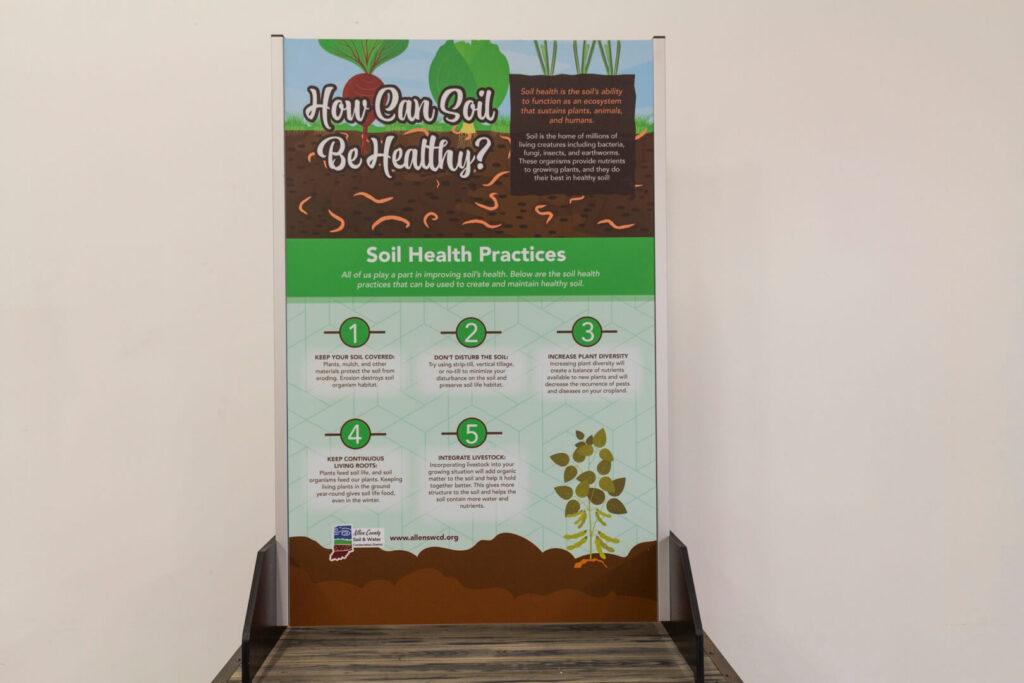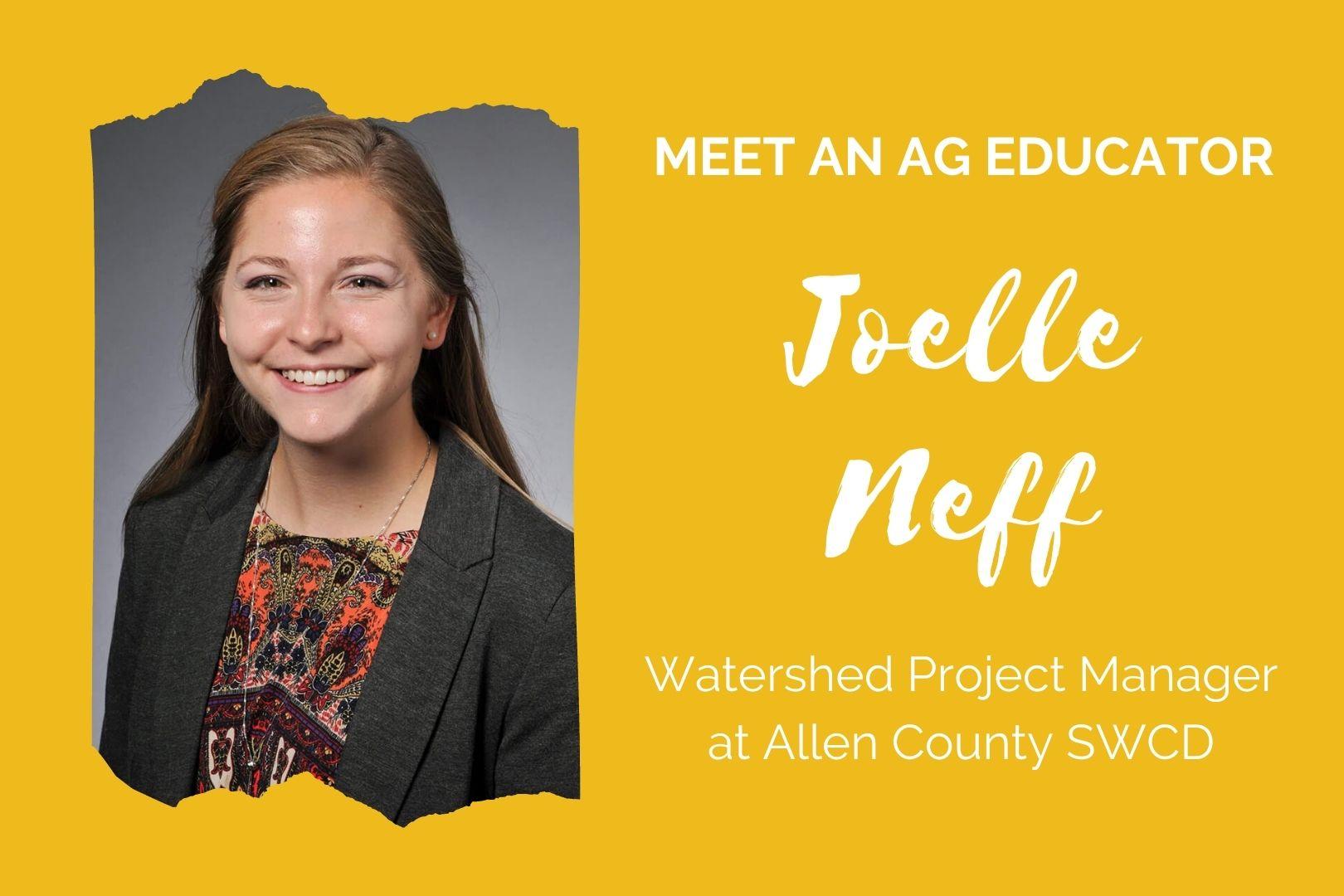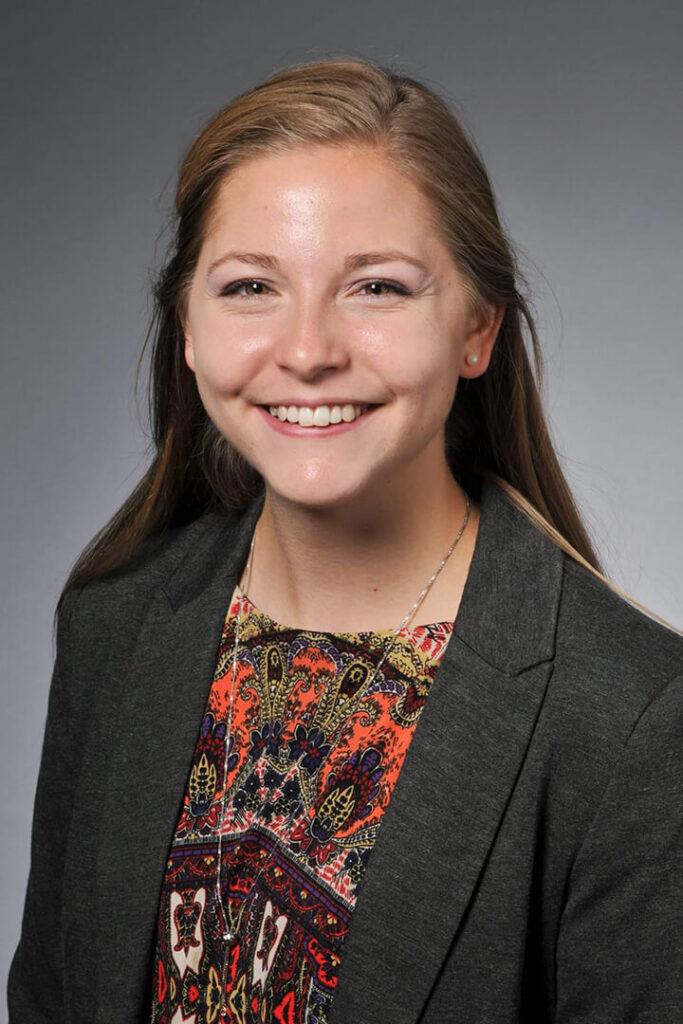
Not all ag educators work with consumers, of course. Some of them focus on providing info to the producers instead. University extension offices fill this role, but they’re not the only ones. Conservation districts, which often follow county lines, also frequently offer farmer-focused education.
Like extension offices, conservation districts collect and distribute lots of useful information. They offer resources for consumers about eco-friendly lifestyles, gardening, and much more. And for farmers, they provide training and assistance with conservation-related farming techniques.
Allen County Soil & Water Conservation District (SWCD) isn’t too far from our headquarters, just a few hours away in Indiana. We met them when they asked us to make them some displays about soil health. And recently, we got to have a conversation with Joelle Neff, their watershed project manager. She explained what farmer-focused ag education looks like for an SWCD.
Exhibit Farm: So what does your everyday work look like?
Joelle Neff: Basically, the Soil & Water Conservation District, we’re devoted to promoting wise use of natural resources such as soil, water — [it’s] in our name — and then other natural resources like native plants and prairies. But we have a big focus on both water quality and soil health, and that allows us to focus a lot of our education on farmers. They have a lot to do with soil health, which can in turn impact water quality.
So we do all kinds of things, including collecting water samples from different rivers around the area. That allows us to relay the information, both to the general public and to farmers, of “Here’s how the water quality was impacted in planting season. Here’s how it was impacted when you applied your fertilizers and your pesticides and your herbicides. Here’s how it was impacted during harvest season.”
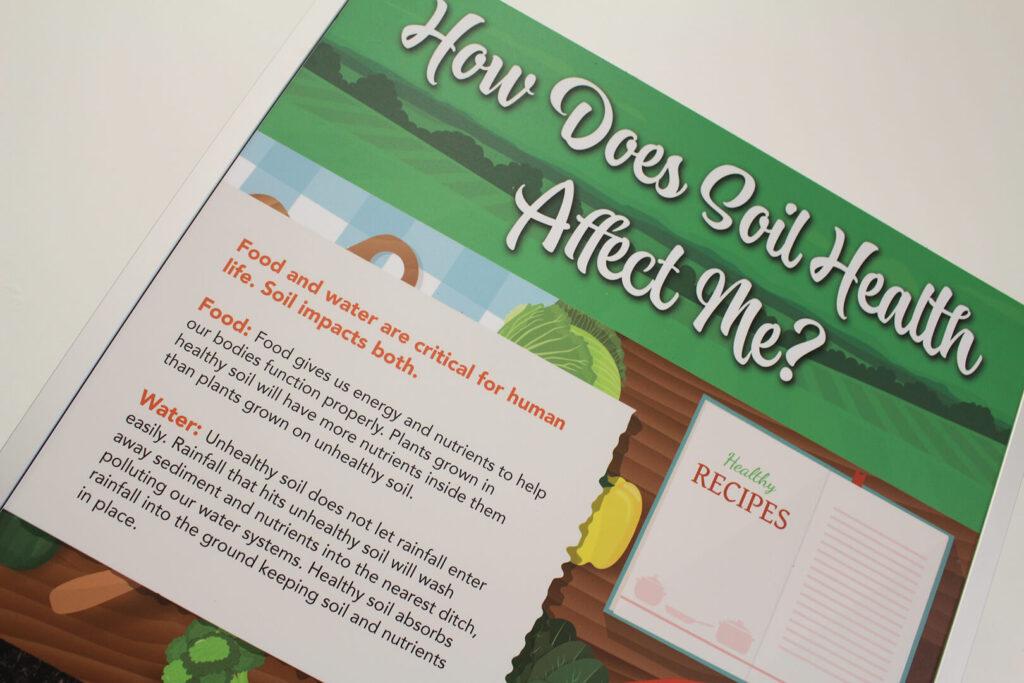
That’s just one part; we also get different contribution agreements from Natural Resource Conservation Service (NRCS), which is part of the US Department of Agriculture. That allows us to educate about the different soil health practices, which are: keeping your soil covered, keeping diverse plantings, minimizing disturbance, and keeping living roots in the soil at all times. That’s what we try to promote to farmers and also to urban gardeners and the general public.
EF: What are the challenges of having both professionals and amateurs in your audience?
JN: The challenge is trying to get focus, I guess, in our educational pieces. When you have several different audiences, you have to think like both of them. And sometimes we’re successful, sometimes we’re not. Sometimes we have to create two separate brochures, or two separate educational pieces that relay the same information to different people. So that can be challenging sometimes, but we have a pretty good team.
EF: So with the Soil Health Displays, what was the thought process of how to make those useful for both groups?
JN: We tried to make it as interactive as possible. I feel like the interactive [aspect] caters to both groups, but especially the consumers. Because if you’re at a show, kids are gonna run up and want to pull up those soil testing probes, or they’re gonna want to hit different buttons, or they’re gonna want to touch the touchscreen and learn about ants and earthworms.
We haven’t had very many farmers hitting buttons, but they’ll stop and they’ll read the whole display. The farmers often know something about the principles that we’re trying to teach. It’s a really good-looking display, so it catches their eye, and then they see the different cover crops, which they can recognize. And we try to have someone at the display to start a conversation with people. So that’s how the interactive part was geared both towards general public and to the farmers.
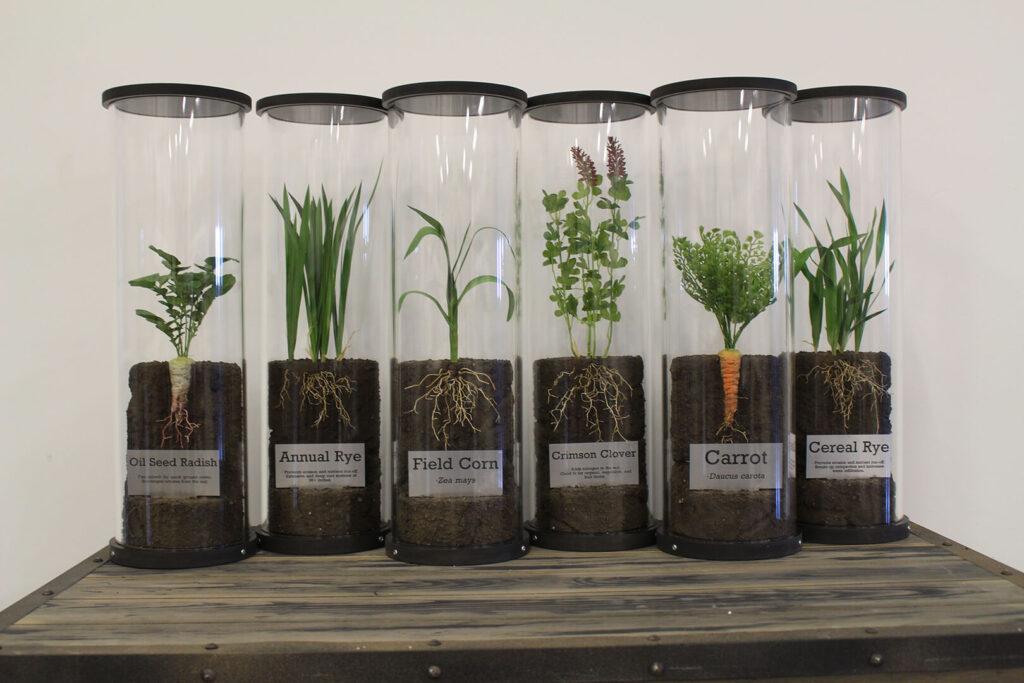
EF: What kind of farmer educational outreach strategies are most effective?
JN: We do a lot of workshops. We’ll do virtual workshops, which we’ve found works better with a small-farm [or] gardening audience, they love workshops. And you might get a larger-scale farmer in there too, depending on who the speaker is and what the topic is. If they find it important and it’s in the right season, maybe it’s a rainy day, they’ll come and they’ll watch.
We also have field days, so we get together with a lot of speakers, get all the farmers there, have food available (that usually gets in a few people!). And we usually just use brochures to promote different programs or events we have coming up. We have a couple of booklets, one specifically for cover crops, so we’ll hand that out whenever we’re at an event. [It’s] something that’s palatable to read rather than a giant book with all the information.
EF: What are some of the specific conservation challenges in you guys’ area of Indiana?
JN: No-till and cover crops are the main things that we’re focusing on. Drainage water management is another thing we’re focusing on; that helps raise and lower the water table in a field. So if you’re having a heavy rainstorm, maybe you keep the water in the field so it’s not all rushing into the stream at the same time.

But [we encourage farmers] to incorporate cover crops, and I think more people are leaning more in that direction. And we help with modifying equipment to start incorporating different practices. No-till’s a big one. Just to get started, you have to change all your equipment — well, not all of it, but you have to change some of your equipment. So it can be a challenge in that area.
Where we are in Allen County, we don’t deal with a lot of animal production facilities; a lot of that is right over the border on the Ohio side. So we deal with some water quality issues with manure, but not a whole lot.
EF: I always like to wrap up by asking, how did you wind up in this field? How did you first become interested in it?
JN: So I’m originally from Virginia, right in the Shenandoah Mountains. I wanted to study at a small Christian school with agriculture, so I found Huntington University, which is around here. And I did an internship with the Indiana State Department of Agriculture (ISDA) right after my junior year of college.
The ISDA is in the same office as the Soil & Water Conservation District and the NRCS. So I got to start learning about all these different conservation practices and how we can utilize farming to improve our water quality and our land use. And I really just fell in love with the subject. Right after I graduated I stopped doing my part-time job with the State Department of Ag and moved over to Soil & Water Conservation District full-time. It was a God thing where He just placed me right where I needed to be until I could move over to Soil & Water District.
